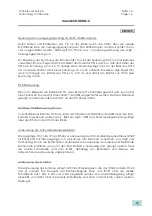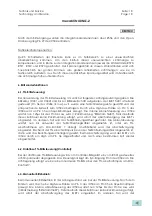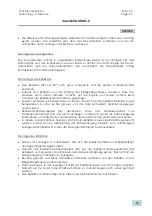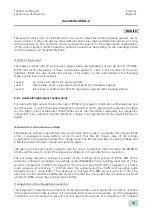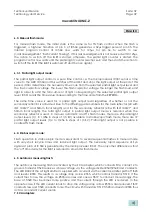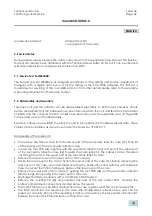
Technik und Service
Seite: 29
Technology and Service
Page: 29
mecablitz 40 MZ-2
ENGLISH
4.3. Secondary reflector trigger circuit:
The trigger circuit for the secondary reflector is connected in parallel to the trigger circuit for the
main reflector. Flash tube Rö002 can be ignited only if the switch S601 is in the position shown,
which means that the flash tube is not short-circuited by the switch. Capacitor C601 is charged to
nearly the flash capacitor voltage via resistor R403. When a flash is triggered (Ty401 conducts, see
the description of the main reflector circuit, page 6), C601 can discharge via Ty401, D701 (version 3:
D406) and the primary winding 1-2 of T601. This induces a positive high-voltage pulse in the
secondary winding 3-4 of T601 which ignites the flash tube Rö002.
In order to ensure that flash tube Rö002 ignites reliably, almost the full flash capacitor voltage is
connected to the anode of Rö002 via the voltage divider R405/R414.
5. Program control:
The mecablitz 40 MZ-2 has a very complex program control for coordination of the hardware in the
various operating states. The program sequences are controlled by the microprocessor and are
executed either by the switching stages of the microprocessor or by the ASIC, which is controlled
via the serial data bus.
5.1. Microprocessor and periphery:
The microprocessor in the mecablitz 40 MZ-2 (referred to as IC301 in the following description) is a
TMP 47C847. It has its own ROM area (non-volatile memory for the control program) and a RAM
area (a volatile memory which holds the data only as long as a voltage is connected to IC301).
IC301 directly controls the LC display, the interrogation of buttons and switches, and the control of
the power zoom function. It also directly drives various indicators, monitors various voltages,
transmits data via the serial data bus to the ASIC, and permits the exchange of data with the SCA
3000 adapter via a serial flash bus (called the SBB). The memory area for the user settings, the
alignment values and the table for partial light output are kept in a separate EEPROM.
Operating states of IC301:
Without batteries fitted:
-
programs and tables are stored in the ROM
-
the RAM contents are undefined
-
the (external) EEPROM contains alignment values,
user settings and table values (light output)
When batteries are fitted:
-
IC301 receives supply voltage, even if the flashgun is
(voltage rises)
switched off
-
oscillator starts to run, program does not run yet
-
microprocessor waits for reset
Voltage stable,
reset executed:
-
initialization (set program counter to 0)
-
program
execution
-
if the main switch is OFF (or if "AUTO OFF" occurs after
10 minutes), the software switches off the auxiliary


